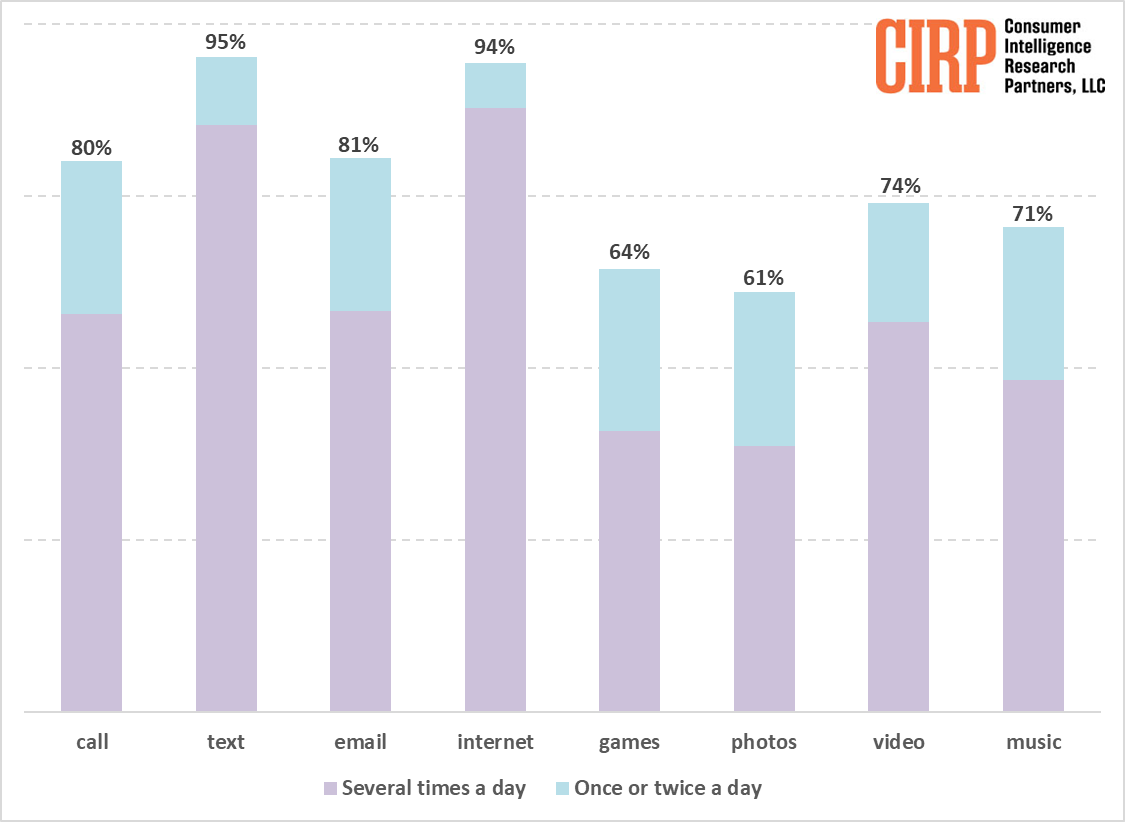Despite the many promised features of the upcoming Apple Intelligence device, the vast majority of iPhone users only use the device for everyday things, like sending messages or browsing the Internet. This is indicated by a new study conducted by CIRP (Consumer Intelligence Research Partners).

Last week, during WWDC 2024, the Cupertino giant presented the world with its long-awaited resources in the AI sector. The goal is to integrate AI into the most common tasks, providing greater practicality and new capabilities.
Among the new features coming to Apple devices are intelligent copying, generative image editing, AI-powered emoji generation, and others. To measure the real impact of the new “apple” project, CIRP conducted a survey among iPhone users and came to a somewhat “surprising” result.
Despite having a “super cell phone” in your hands, communication remains the main priority for users (for more than 90% of them). In the survey, the company asked questions about how frequently you use your iPhone for the following features: calls, texting, email, Internet, gaming, and viewing and editing photos, videos, and music.
Although we live in the age of social networking, photo editing is not a resource that most of the interviewees use frequently Stady. Games are also rarely accessible because they are limited to a highly segmented audience that, in most cases, prefers to play on other platforms, such as consoles and PC. see below:

Apple Intelligence arrives in September
On the other hand, the ability to quickly view information on the Internet with just a few clicks, via text or voice messages, is also one of the favorite features of modern smartphone users.
The research also found that Apple Intelligence features, such as typing assistant and AI emoji creation, could top the popularity rankings. This is because they should be more accessible in messaging apps. It can be useful in improving the writing process.
Moreover, the more powerful version of Siri should also be more widely used by the public, as it is able to better understand user requests and provide more relevant responses – and, if necessary, integrate with ChatGPT.
Read more:

